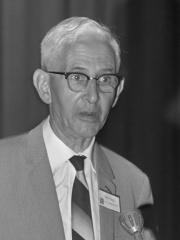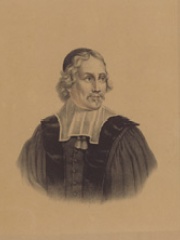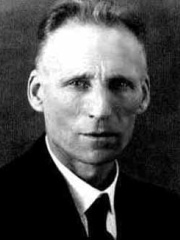
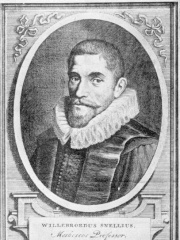
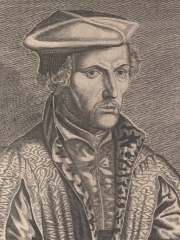


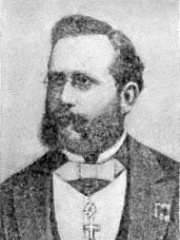
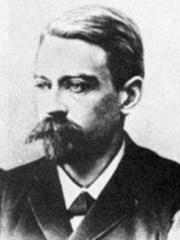

The Most Famous
MATHEMATICIANS from Netherlands
This page contains a list of the greatest Dutch Mathematicians. The pantheon dataset contains 1,004 Mathematicians, 15 of which were born in Netherlands. This makes Netherlands the birth place of the 15th most number of Mathematicians behind Iran, and Austria.
Top 10
The following people are considered by Pantheon to be the top 10 most legendary Dutch Mathematicians of all time. This list of famous Dutch Mathematicians is sorted by HPI (Historical Popularity Index), a metric that aggregates information on a biography's online popularity. Visit the rankings page to view the entire list of Dutch Mathematicians.

1. L. E. J. Brouwer (1881 - 1966)
With an HPI of 72.42, L. E. J. Brouwer is the most famous Dutch Mathematician. His biography has been translated into 37 different languages on wikipedia.
Luitzen Egbertus Jan "Bertus" Brouwer (27 February 1881 – 2 December 1966) was a Dutch mathematician and philosopher who worked in topology, set theory, measure theory and complex analysis. Regarded as one of the greatest mathematicians of the 20th century, he is known as one of the founders of modern topology, particularly for establishing his fixed-point theorem and the topological invariance of dimension. Brouwer also became a major figure in the philosophy of intuitionism, a constructivist school of mathematics which argues that math is a cognitive construct rather than a type of objective truth. This position led to the Brouwer–Hilbert controversy, in which Brouwer sparred with his formalist colleague David Hilbert. Brouwer's ideas were subsequently taken up by his student Arend Heyting and Hilbert's former student Hermann Weyl. In addition to his mathematical work, Brouwer also published the short philosophical tract Life, Art, and Mysticism (1905).

2. Willebrord Snellius (1580 - 1626)
With an HPI of 71.45, Willebrord Snellius is the 2nd most famous Dutch Mathematician. His biography has been translated into 44 different languages.
Willebrord Snellius (born Willebrord Snel van Royen (13 June 1580 – 30 October 1626), commonly known simply as Snellius and Snell, was a Dutch astronomer and mathematician. Snell is best known for the law of refraction of light known as Snell's law, his pioneering work in survey known as Snellius's triangulation, and the Snellius–Pothenot problem, a means in planar trigonometry of finding an unknown point from known ones. Despite being commonly attributed to Snell, the law of refraction was discovered by the Persian scientist Ibn Sahl around 984 AD.

3. Gemma Frisius (1508 - 1555)
With an HPI of 65.13, Gemma Frisius is the 3rd most famous Dutch Mathematician. His biography has been translated into 30 different languages.
Gemma Frisius (; born Jemme Reinerszoon; December 9, 1508 – May 25, 1555) was a Dutch physician, mathematician, cartographer, philosopher, and instrument maker. He created important globes, improved the mathematical instruments of his day and applied mathematics in new ways to surveying and navigation. Gemma's rings, an astronomical instrument, are named after him. Along with Gerardus Mercator and Abraham Ortelius, Frisius is often considered one of the founders of the Netherlandish school of cartography, and significantly helped lay the foundations for the school's golden age (approximately 1570s–1670s).

4. Isaac Beeckman (1588 - 1637)
With an HPI of 64.33, Isaac Beeckman is the 4th most famous Dutch Mathematician. His biography has been translated into 20 different languages.
Isaac Beeckman (10 December 1588 – 19 May 1637) was a Dutch philosopher and scientist, who, through his studies and contact with leading natural philosophers, may have "virtually given birth to modern atomism".
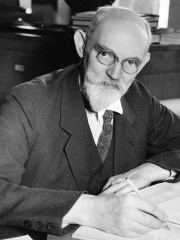
5. Willem de Sitter (1872 - 1934)
With an HPI of 64.04, Willem de Sitter is the 5th most famous Dutch Mathematician. His biography has been translated into 42 different languages.
Willem de Sitter (6 May 1872 – 20 November 1934) was a Dutch mathematician, physicist, and astronomer. He is known for the de Sitter universe, which is a cosmological model that was named after him.

6. Bartel Leendert van der Waerden (1903 - 1996)
With an HPI of 61.79, Bartel Leendert van der Waerden is the 6th most famous Dutch Mathematician. His biography has been translated into 24 different languages.
Bartel Leendert van der Waerden (Dutch: [ˈbɑrtə(l) ˈleːndərt fɑn dər ˈʋaːrdə(n)]; 2 February 1903 – 12 January 1996) was a Dutch mathematician and historian of mathematics.

7. Auguste Kerckhoffs (1835 - 1903)
With an HPI of 60.68, Auguste Kerckhoffs is the 7th most famous Dutch Mathematician. His biography has been translated into 20 different languages.
Auguste Kerckhoffs (19 January 1835 – 9 August 1903) was a Dutch linguist and cryptographer in the late 19th century.

8. Thomas Joannes Stieltjes (1856 - 1894)
With an HPI of 60.28, Thomas Joannes Stieltjes is the 8th most famous Dutch Mathematician. His biography has been translated into 24 different languages.
Thomas Joannes Stieltjes ( STEEL-chəz, Dutch: [ˈtoːmɑ ˈstiltɕəs]; 29 December 1856 – 31 December 1894) was a Dutch mathematician. He was a pioneer in the field of moment problems and contributed to the study of continued fractions. The Thomas Stieltjes Institute for Mathematics at Leiden University, dissolved in 2011, was named after him, as is the Riemann–Stieltjes integral.

9. Hendrik C. van de Hulst (1918 - 2000)
With an HPI of 60.26, Hendrik C. van de Hulst is the 9th most famous Dutch Mathematician. His biography has been translated into 23 different languages.
Hendrik Christoffel "Henk" van de Hulst (19 November 1918 – 31 July 2000) was a Dutch astronomer. In 1944, while a student in Utrecht, he predicted the existence of the 21 cm hyperfine line of neutral interstellar hydrogen. After this line was discovered, he participated, with Jan Oort and Lex Muller, in the effort to use radio astronomy to map out the neutral hydrogen in our galaxy, which first revealed its spiral structure. Motivated by the scattering in cosmic dust, Van de Hulst studied light scattering by spherical particles and wrote his doctoral thesis on the topic, subsequently formulating the anomalous diffraction theory. He spent most of his career at Leiden University, retiring in 1984. He published widely in astronomy, and dealt with the solar corona, and interstellar clouds. After 1960 he was a leader in international space research projects. In 1956 he became member of the Royal Netherlands Academy of Arts and Sciences.
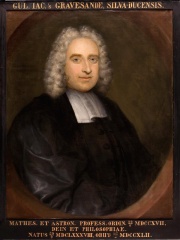
10. Willem 's Gravesande (1688 - 1742)
With an HPI of 58.36, Willem 's Gravesande is the 10th most famous Dutch Mathematician. His biography has been translated into 18 different languages.
Willem Jacob 's Gravesande (26 September 1688 – 28 February 1742) was a Dutch mathematician and natural philosopher, chiefly remembered for developing experimental demonstrations of the laws of classical mechanics and the first experimental measurement of kinetic energy. As professor of mathematics, astronomy, and philosophy at Leiden University, he helped to propagate Isaac Newton's ideas in Continental Europe.
People
Pantheon has 15 people classified as Dutch mathematicians born between 1508 and 1918. Of these 15, none of them are still alive today. The most famous deceased Dutch mathematicians include L. E. J. Brouwer, Willebrord Snellius, and Gemma Frisius.
Deceased Dutch Mathematicians
Go to all RankingsL. E. J. Brouwer
1881 - 1966
HPI: 72.42
Willebrord Snellius
1580 - 1626
HPI: 71.45
Gemma Frisius
1508 - 1555
HPI: 65.13
Isaac Beeckman
1588 - 1637
HPI: 64.33
Willem de Sitter
1872 - 1934
HPI: 64.04
Bartel Leendert van der Waerden
1903 - 1996
HPI: 61.79
Auguste Kerckhoffs
1835 - 1903
HPI: 60.68
Thomas Joannes Stieltjes
1856 - 1894
HPI: 60.28
Hendrik C. van de Hulst
1918 - 2000
HPI: 60.26
Willem 's Gravesande
1688 - 1742
HPI: 58.36
Arend Heyting
1898 - 1980
HPI: 57.73
Jacobus Golius
1596 - 1667
HPI: 57.15
Overlapping Lives
Which Mathematicians were alive at the same time? This visualization shows the lifespans of the 10 most globally memorable Mathematicians since 1700.

